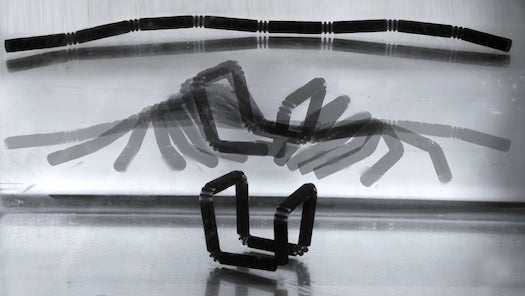Researchers Unveil World’s First 4-D Printer
What the hell is that?!

We may earn revenue from the products available on this page and participate in affiliate programs. Learn more ›
We’ve only just started learning the amazing things we can do with 3-D printing. So forgive us if we can’t quite get our heads around this new idea from MIT, which researchers call “4-D printing.”
Here’s what they’re saying about it: Instead of printing out a full shape, the 4-D printer creates a strand of multiple materials–and that strand becomes whatever you want it to.
The process is sort of reminiscent of those toy dinosaurs that expand when you drop them in water. First, the printer creates a long string of materials. Then you put the string in water. At that point, the string of materials can fold into various shapes based on how the materials are placed. The resulting examples we’ve seen so far are simple–a cube or the letters “MIT”–but its creator and director of MIT’s Self-Assembly Lab, Skylar Tibbits, has already spoken about what this self-assembly technique could mean to architecture and other fields. We’re a long way from a building making itself, but it’s a fun thought: laying down a skyscraper and watching it bend toward the sky like that scene in Inception. Even more interesting, the materials can potentially “transform” from one 3-D shape into another. (“Tired of that cube? Perhaps a rectangle would be preferable.”)
Tibbits will be elaborating on the process at a TED Talk today, and we’ll update here with any new information on the project.